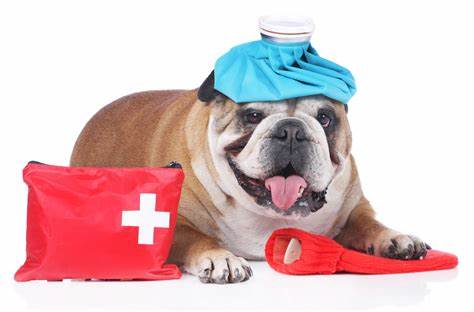When it comes to caring for your pet, it’s important to know the basics of pet first aid. Knowing what to do in an emergency can help you save your pet’s life and prevent further injury or illness. Here are some essential things you need to know about pet first aid.
Basic Procedures
The American Veterinary Medical Association (AVMA) recommends that all pet owners learn basic procedures for pet first aid. These include recognizing signs of poisoning and exposure to toxins, seizures, fractures, bleeding (external and internal), burns, choking, and heatstroke. Knowing how to recognize these signs can help you respond quickly and appropriately in an emergency situation.
What To Include In Your Pet First Aid Kit
Having a well-stocked pet first aid kit is essential for any pet owner. The PetMD website recommends including items such as an emergency contact card, blunt tipped scissors, bandages, sterile eye solution, tweezers and forceps, hydrogen peroxide 3%, cotton balls or swabs, styptic powder or pencils, saline solution concentrate, thermometer with lubricant jelly or petroleum jelly, antiseptic wipes or spray, antibiotic ointment or cream, antihistamine tablets or syrup for allergic reactions and sting relief pads or spray.
The American Kennel Club (AKC) also suggests adding items such as a muzzle (to prevent biting), gauze rolls and pads of various sizes for wrapping wounds and applying pressure on bleeding areas; adhesive tape; nonstick bandages; ice packs; latex gloves; a blanket; a flashlight; alcohol wipes; tick removal tools; nail clippers; styptic powder for stopping bleeding from nails; eye wash solution; tweezers for removing splinters and ticks; a magnifying glass for examining wounds closely; a digital thermometer with lubricating jelly or petroleum jelly; activated charcoal tablets (for poison ingestion); hydrogen peroxide 3% USP (for inducing vomiting); artificial tear gel (for eye injuries); Benadryl tablets (for allergic reactions); electrolyte solution packets (for dehydration); flea comb (to remove fleas); syringes without needles (for administering oral medications).
Shock & Rescue Breathing
If your dog is unconscious and does not appear to be breathing then try gently pumping his chest with the palm of your hand while feeling just behind his elbow joint on either side of his chest wall at the same time. This will help stimulate circulation in the heart area which may cause him to start breathing again on his own. If he doesn’t start breathing again then you should begin rescue breathing by closing his mouth gently but firmly around his muzzle area so that no air escapes when you blow into his nose. Blow two breaths into each nostril until you see his chest rise then wait until it falls before blowing two more breaths into each nostril again until he starts breathing on his own again.
CPR
If your dog still isn’t breathing after rescue breathing then it’s time to perform CPR on him by compressing the chest wall with both hands placed one over the other directly over the heart area while pushing down firmly but not too hard at least twice per second until he begins breathing on his own again or until veterinary help arrives if possible. Make sure that when performing CPR that you don’t compress too hard as this could cause serious damage to your dog’s ribs or internal organs if done incorrectly so make sure that you are familiar with proper technique before attempting this procedure yourself if possible.
Other Tips
In addition to knowing basic procedures for pet first aid there are some other tips that every owner should know such as reducing risks by safety checking their pet’s surroundings like they would a child’s environment before allowing them access to it as well as staying calm during an emergency situation so that they can think clearly about what needs to be done next in order to provide their pet with the best care possible during an emergency situation. It is also important for owners to have a well stocked pet first aid kit handy at all times in case of emergencies as well as taking their pets regularly scheduled checkups at their veterinarian office so that any health issues can be addressed early before they become more serious problems later down the line which could potentially put their pets life in danger if not taken care of properly in time by qualified professionals such as veterinarians who specialize in animal care specifically rather than relying solely on home remedies alone which may not always be effective depending upon the severity of the medical issue at hand so always consult with your veterinarian whenever possible before attempting any home remedies yourself just in case they may do more harm than good depending upon what type of medical issue is being dealt with at any given time frame .
Finally it is also important for owners to consider taking classes on pet first aid from certified instructors who specialize in teaching these types of courses since these courses are designed specifically not only teach owners how assess their pets illnesses or injuries but also how administer basic treatments themselves if necessary under certain circumstances where professional veterinary care may not be available right away due to distance , cost , availability etc .









